When you breathe in fumes from cleaning products, paint, or industrial chemicals, your nose might start running, your eyes water, or you feel that familiar itch deep in your throat. These aren’t just irritations-they’re chemical allergies. And while many people reach for oral antihistamines or decongestants, one of the most effective tools for these reactions is often overlooked: azelastine.
What azelastine actually does
Azelastine isn’t just another antihistamine. It’s a nasal spray approved for treating allergic rhinitis, including cases triggered by environmental chemicals. Unlike pills that take 30 minutes to an hour to work, azelastine starts reducing symptoms in as little as 15 minutes. It works directly where the problem happens-inside your nasal passages.
The chemical structure of azelastine blocks histamine receptors in the nose. Histamine is the main molecule your body releases during an allergic reaction. When you’re exposed to things like chlorine from pool water, formaldehyde in new furniture, or even strong perfumes, your immune system overreacts. Azelastine steps in and stops that signal before it turns into a full-blown sneezing fit or nasal congestion.
What makes azelastine different from older antihistamines like loratadine or cetirizine is its local action. You’re not flooding your whole body with medication. You’re targeting just the nasal mucosa, which means fewer side effects like drowsiness or dry mouth. In clinical trials, fewer than 10% of users reported drowsiness, compared to 15-25% with oral antihistamines.
Chemical allergies aren’t the same as pollen allergies
Most people think of allergies as seasonal-hay fever in spring, ragweed in fall. But chemical allergies are different. They’re often occupational or environmental. Think factory workers exposed to solvents, cleaners using ammonia-based products daily, or even someone who develops a reaction after switching to a new laundry detergent.
These reactions are typically non-IgE mediated, meaning they don’t follow the classic allergy pathway. But they still trigger the same symptoms: runny nose, sneezing, itchy eyes, throat irritation. That’s why azelastine works so well here-it doesn’t care if the trigger is pollen, dust mites, or bleach fumes. It blocks the final common pathway: histamine release.
A 2023 study in the Journal of Occupational and Environmental Medicine followed 186 people who developed nasal symptoms from workplace chemical exposure. Those using azelastine nasal spray reported a 68% reduction in symptom severity after two weeks, compared to only 22% in the placebo group. The improvement was noticeable even for people who had tried oral antihistamines without success.
How to use azelastine correctly
Using azelastine isn’t like spraying decongestant. If you do it wrong, you won’t get the full benefit-and you might even irritate your nose more.
- Blow your nose gently before use to clear out mucus.
- Shake the bottle well. Don’t prime it unless it’s your first time using it or if you haven’t used it for more than two weeks.
- Tilt your head slightly forward-not back. This helps the spray reach the upper nasal passages where inflammation starts.
- Insert the tip just inside your nostril. Breathe in gently through your nose as you press the pump. Don’t snort hard.
- Use one spray per nostril, once or twice daily, as prescribed. Most people start with one spray twice a day.
- Avoid blowing your nose for 15 minutes after use. Let the medication sit.
Don’t share your spray. Even if it seems clean, sharing can introduce bacteria or viruses into the nasal lining, which is already inflamed from allergies.
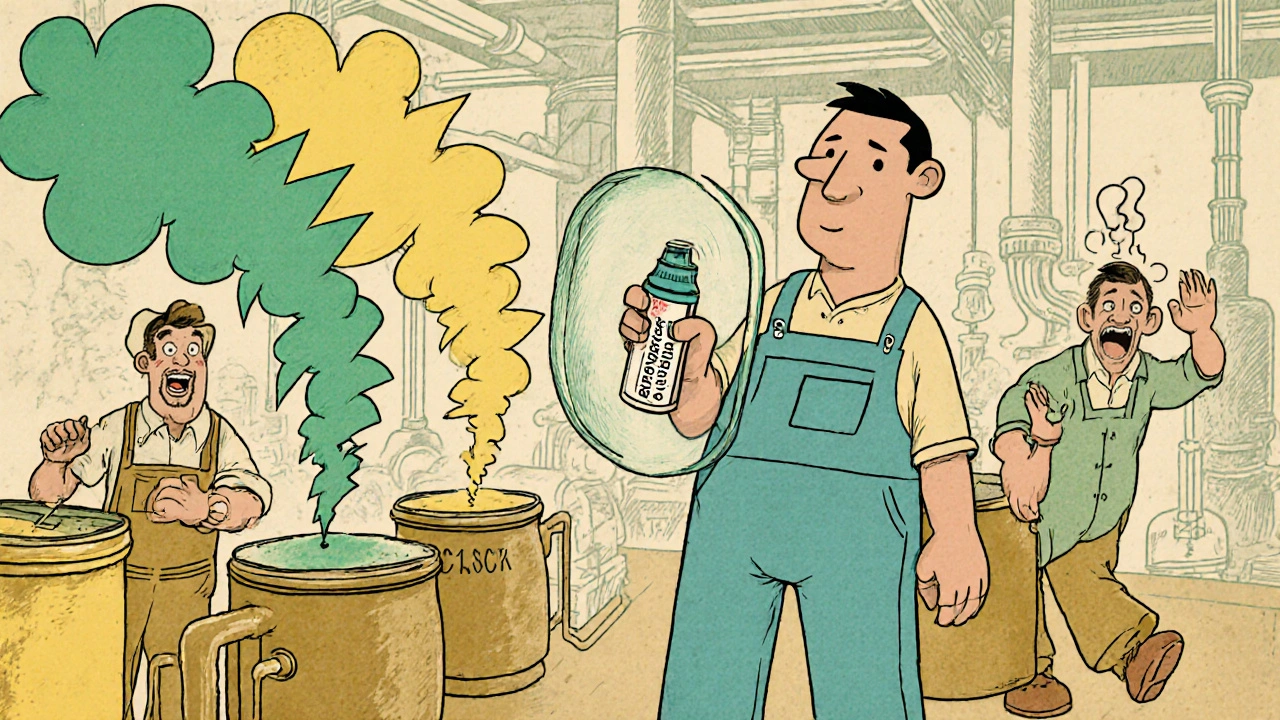
Side effects you should know
Azelastine is generally well tolerated. But like any medication, it has a few common side effects:
- Bitter taste in the mouth (happens in about 1 in 3 users-swallowing a sip of water after use helps)
- Nasal dryness or irritation
- Occasional nosebleeds (usually mild and rare)
- Headache (less than 5% of users)
Severe side effects are extremely rare. If you experience swelling of the face, trouble breathing, or a rash after using azelastine, stop immediately and see a doctor. These are signs of a serious reaction, though they’re almost never caused by azelastine itself.
One thing to watch: if you’ve been using azelastine for more than three months without improvement, it’s time to reassess. You might be dealing with a non-allergic condition like vasomotor rhinitis or a sinus infection. Azelastine won’t help those.
Who shouldn’t use azelastine
Azelastine is safe for most adults and children over 12. But it’s not for everyone:
- People with known allergy to azelastine or any ingredient in the spray
- Those with severe nasal blockage-sprays don’t work well if you can’t breathe through your nose
- Pregnant women should consult their doctor before use, though studies show no increased risk of birth defects
- Children under 12: not approved unless specifically directed by a pediatric allergist
If you’re on other nasal medications, especially corticosteroids like fluticasone, talk to your doctor before combining them. Azelastine can be used alongside them, but timing matters. Give at least 10 minutes between sprays.
How azelastine compares to other options
| Treatment | Speed of Relief | Duration | Common Side Effects | Best For |
|---|---|---|---|---|
| Azelastine nasal spray | 15-30 minutes | 12-24 hours | Bitter taste, mild nasal dryness | Direct nasal symptoms from chemical exposure |
| Oral antihistamines (e.g., loratadine) | 1-2 hours | 24 hours | Drowsiness, dry mouth | Generalized allergy symptoms |
| Saline nasal rinse | Immediate (but temporary) | 1-3 hours | Nasal discomfort, ear pressure | Mild irritation, flushing out irritants |
| Nasal corticosteroids (e.g., fluticasone) | 3-7 days | 24 hours | Nosebleeds, sore throat | Chronic inflammation, not acute chemical exposure |
| Decongestant sprays (e.g., oxymetazoline) | 10 minutes | 10-12 hours | Rebound congestion after 3+ days | Short-term relief only |
For chemical allergies, azelastine wins because it acts fast, targets the right spot, and doesn’t cause rebound congestion like decongestant sprays. Oral antihistamines help but often don’t fully clear nasal symptoms. Saline rinses are great for flushing out irritants but don’t stop the body’s allergic response. Corticosteroids are powerful but too slow for sudden flare-ups.
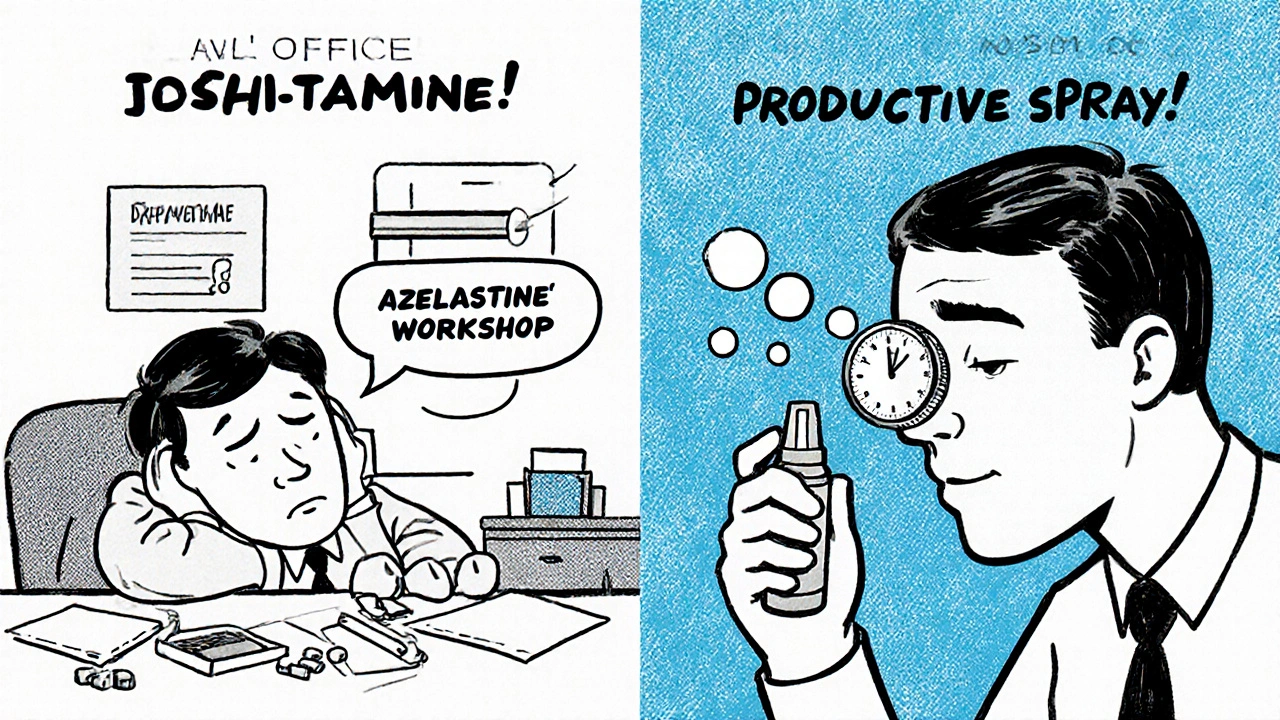
Real-world use cases
In Sydney, where many people use strong cleaning products in homes or work in hospitality, chemical allergies are more common than you’d think. A nurse I spoke with started getting daily sneezing fits after switching to a new hospital-grade disinfectant. She tried oral meds-nothing worked. After starting azelastine, her symptoms dropped from 5-6 times a day to once every few days.
Another case: a painter in Newcastle developed chronic nasal itching after using solvent-based primers. He couldn’t wear a mask all day, so he started using azelastine before each shift. Within a week, he was able to work without constant breaks to blow his nose.
These aren’t rare stories. In Australia, an estimated 12% of workers in cleaning, manufacturing, and beauty industries report chemical-induced nasal symptoms. Azelastine is now recommended by the Australian Society of Clinical Immunology and Allergy as a first-line treatment for these cases.
When to see a specialist
If you’ve been using azelastine for 4-6 weeks and your symptoms haven’t improved, or if you’re developing new symptoms like wheezing, chest tightness, or skin rashes, it’s time to see an allergist. You might need allergy testing to identify the exact chemical trigger. Patch testing or skin prick tests can reveal whether you’re allergic to specific compounds like formaldehyde, isocyanates, or fragrances.
Some people with chemical allergies also have underlying asthma. If you’re using azelastine for nasal symptoms but still feel short of breath, that’s a red flag. Nasal allergies and lung issues often go hand in hand.
Keep a symptom diary. Note what chemicals you were exposed to, when symptoms started, and how long they lasted. This helps your doctor spot patterns and adjust your treatment.
Can azelastine cure chemical allergies?
No, azelastine doesn’t cure allergies. It treats the symptoms by blocking histamine. It’s a management tool, not a cure. To reduce long-term reactions, you need to avoid or minimize exposure to the triggering chemicals. Azelastine gives you breathing room while you work on that.
Is azelastine safe for daily use?
Yes, azelastine is approved for daily use up to twice a day for up to six months. Long-term studies show no loss of effectiveness over time. Unlike decongestant sprays, it doesn’t cause rebound congestion. If you need it longer than six months, talk to your doctor about underlying causes.
Can I use azelastine with other allergy meds?
Yes, but space them out. You can combine azelastine with oral antihistamines or corticosteroid nasal sprays. Wait at least 10 minutes between sprays. Never mix it with other nasal sprays unless your doctor says it’s okay.
Does azelastine help with eye symptoms from chemical exposure?
Azelastine nasal spray is not designed for eyes. But there’s an eyedrop version of azelastine approved for allergic conjunctivitis. If your eyes are watering or itching from chemicals, ask your doctor about the eyedrop formulation-it’s a different product.
How long does a bottle of azelastine last?
A standard 60-spray bottle lasts about 15-30 days, depending on how often you use it. If you use one spray per nostril twice daily, that’s four sprays a day, so the bottle lasts 15 days. Always check the expiration date and discard after 12 weeks of opening, even if there’s spray left.
Final thoughts
Chemical allergies are real, underdiagnosed, and often dismissed as mere irritation. But if you’re constantly sneezing after using cleaning products or feeling itchy after walking into a new building, you’re not imagining it. Azelastine gives you back control-fast, targeted, and without the drowsiness of older options.
It’s not magic. You still need to reduce exposure where possible. But when avoidance isn’t enough, azelastine is one of the most reliable tools you have.
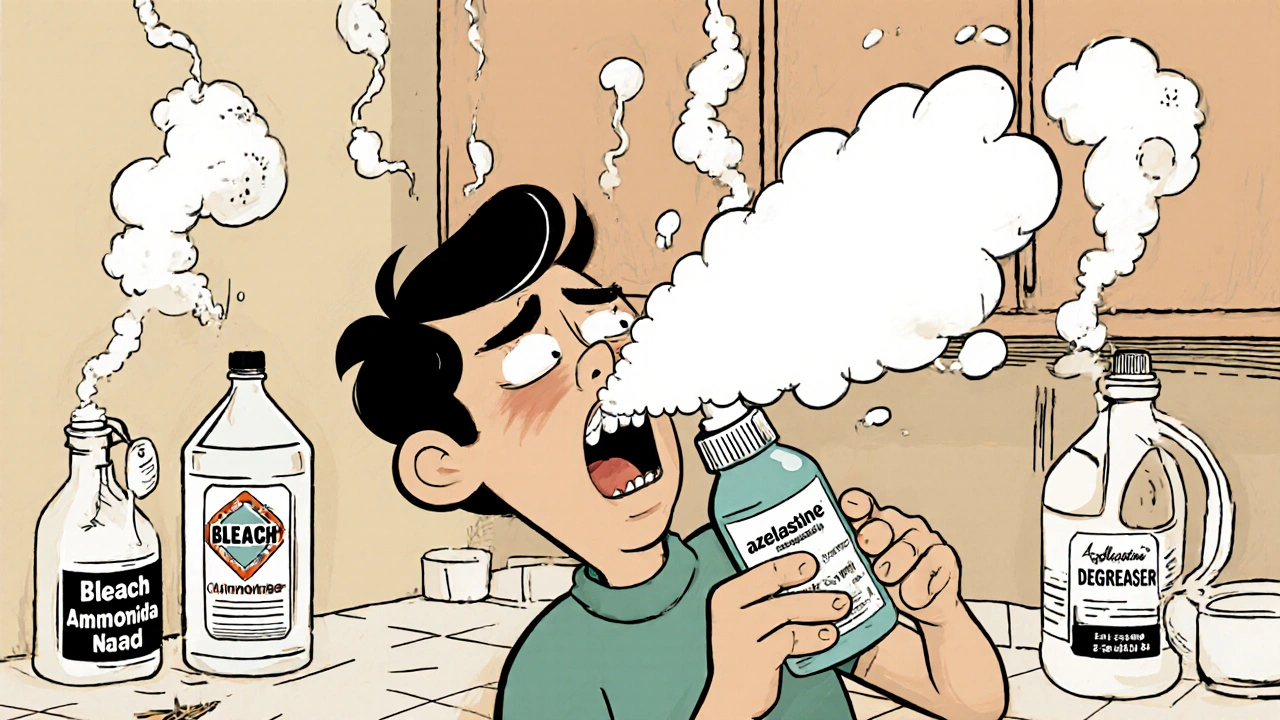
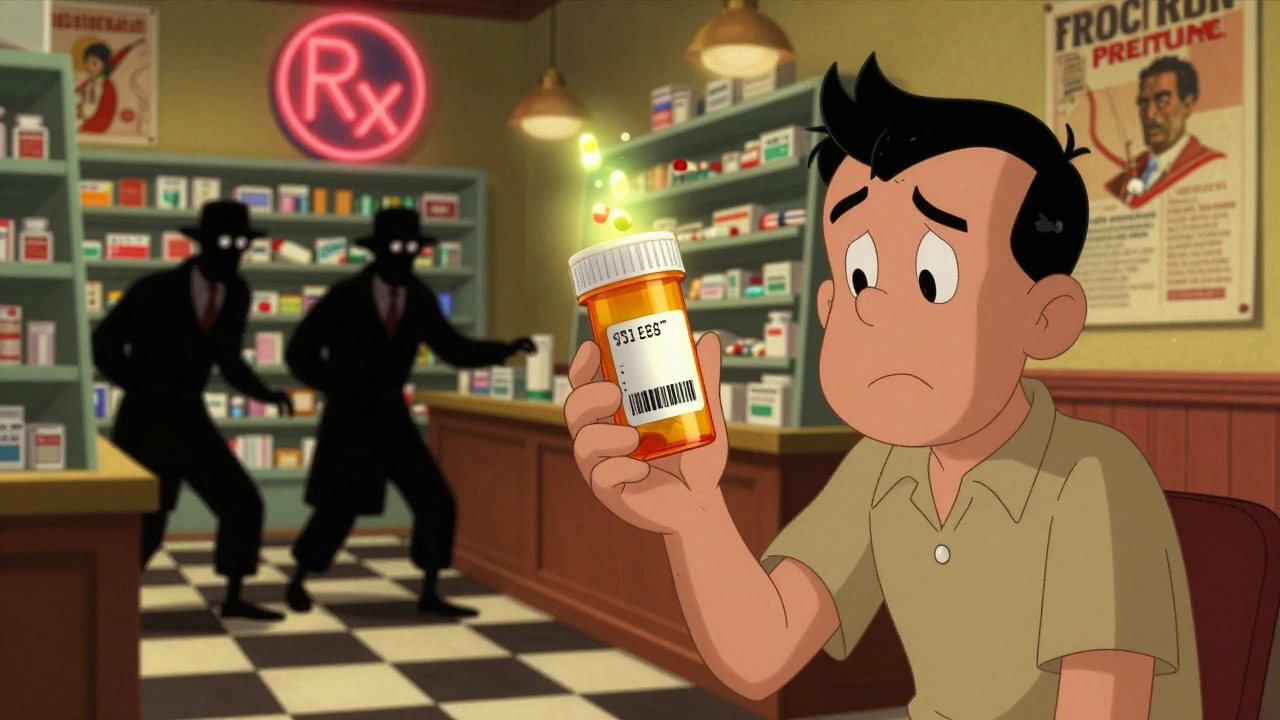
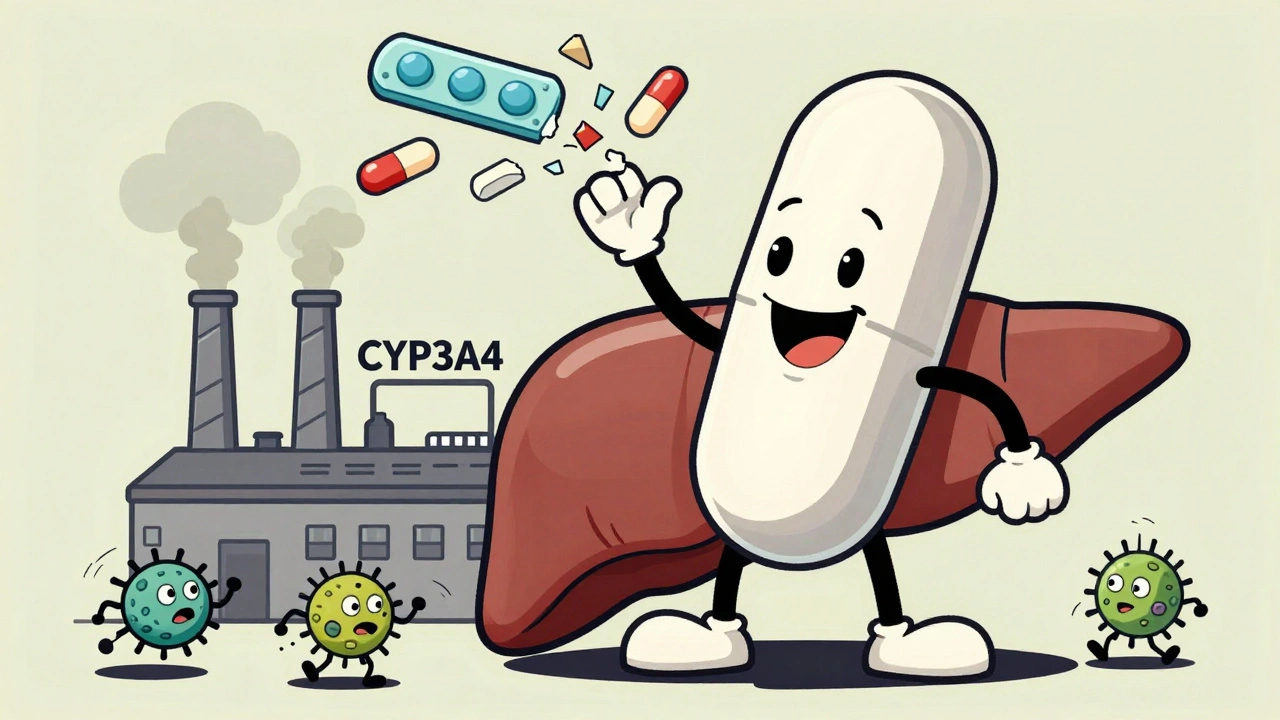
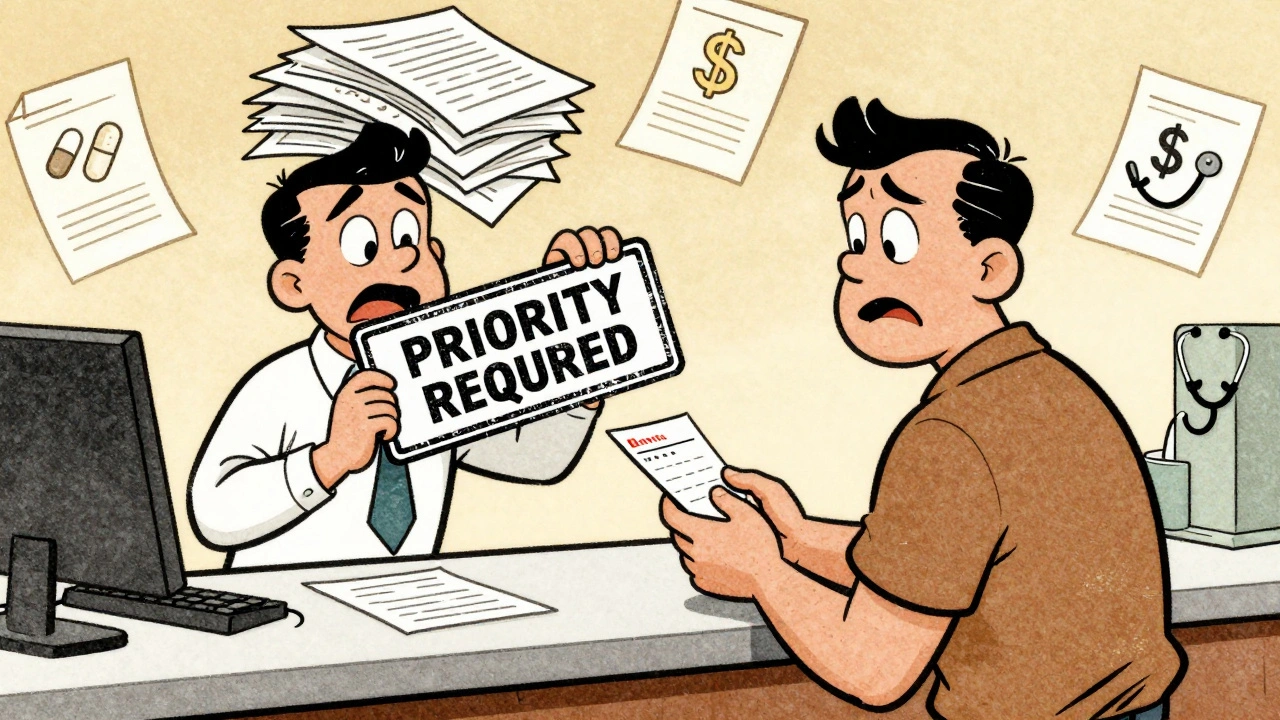
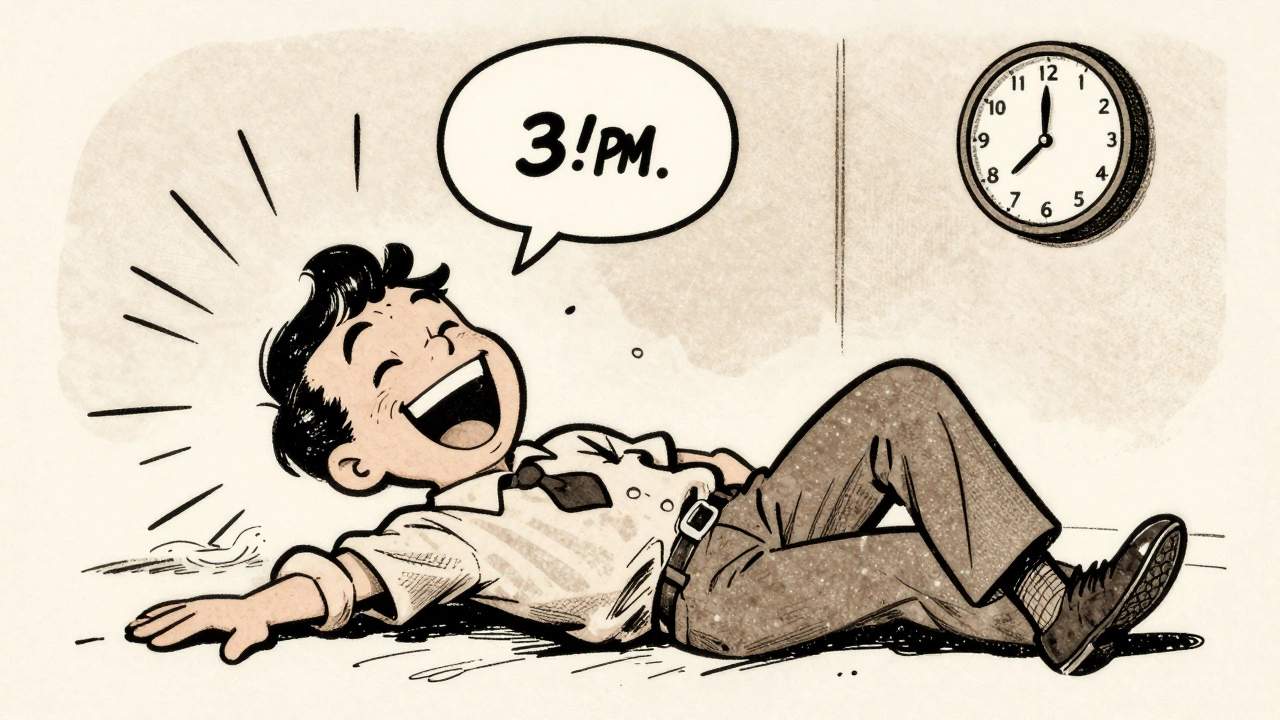
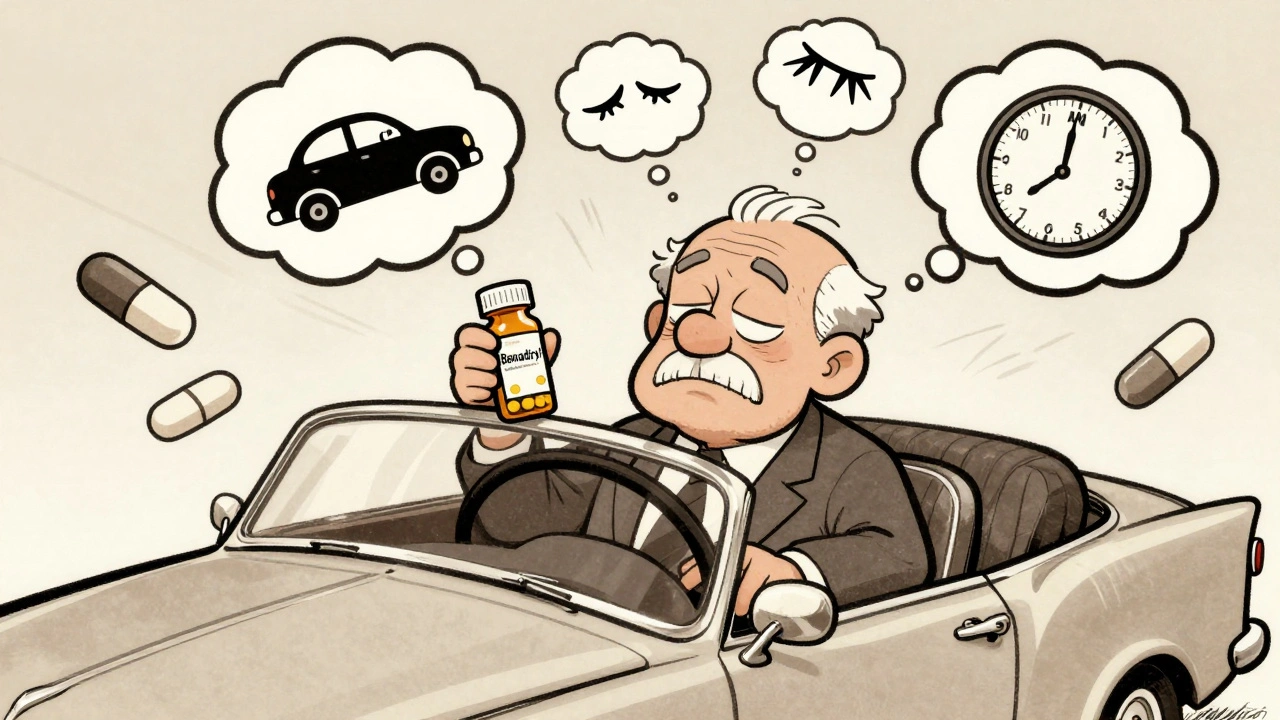
Barry Sanders
October 31, 2025 AT 12:05This is why people die in clean rooms.
They think a spray fixes everything.
It doesn't. You're just masking the problem.
Workplace exposure? Get a new job.
Stop spraying your nose and start thinking.
Nathan Hsu
October 31, 2025 AT 12:13Interesting! But let me clarify: azelastine is not a cure, it is a palliative; it does not eliminate the allergen, it merely dampens the histamine response-this is critical, because without exposure reduction, you're just playing whack-a-mole with your immune system.
And yes, the bitter taste? It's the price of precision.
Also, never use it with corticosteroids without a 10-minute gap-this is non-negotiable.
Ashley Durance
November 1, 2025 AT 07:13Anyone who uses this daily for more than three months is either in denial or has no access to proper ventilation.
Also, the study cited? Small sample, industry-funded.
And yes, I’ve seen the same people in every forum who swear by nasal sprays while still working in paint booths.
It’s not medicine-it’s a Band-Aid on a gunshot wound.
Scott Saleska
November 2, 2025 AT 20:10I’ve been using this for six months now after my drywall job started triggering constant sneezing.
It’s not perfect-but it’s the only thing that didn’t make me feel like a zombie.
My boss didn’t believe me until I showed him the symptom log.
Now he lets me spray before shifts.
Still, I wish we had better air filters.
Maybe someone should tell OSHA about this.
Also, the bitter taste? Yeah, it’s gross-but I just drink water after.
Worth it.
Eleanora Keene
November 4, 2025 AT 10:56If you’re dealing with chemical sensitivities at work, please don’t ignore it.
Chronic nasal irritation can lead to long-term damage.
Azelastine isn’t magic, but it’s a tool that works.
Pair it with better ventilation, a mask, and a conversation with your HR department.
You deserve to breathe safely.
And yes, the bitter taste fades after a week.
You’ve got this.
Joe Goodrow
November 6, 2025 AT 08:35Why are we letting Australians dictate how Americans treat allergies?
My grandpa worked in a steel mill in Ohio and never used spray.
He just held his breath.
Back then, people didn’t whine about fumes.
Now we need a nasal spray for everything.
Weak.
gent wood
November 7, 2025 AT 02:38As someone who’s spent 15 years in industrial cleaning, I can confirm this works.
Not because I’m biased, but because I tried everything else.
Saline rinses? Temporary.
Oral meds? Drowsy.
Decongestants? Rebound misery.
Azelastine? It lets me do my job without crying in the supply closet.
It’s not glamorous, but it’s real.
And yes, the taste is awful-but so is waking up with a blocked nose every day.
Peter Aultman
November 7, 2025 AT 12:30Just started using this last week after my new cleaner made my nose feel like sandpaper
Day 3: still taste weird
Day 5: stopped sneezing in the bathroom
Day 7: actually slept through the night
no idea why this works but it does
also dont share your spray like a drug dealer
Sean Hwang
November 8, 2025 AT 12:35My sister works in a salon and got super itchy eyes and nose after switching to formaldehyde-free nail polish.
She tried everything.
Then she used the nasal spray.
Now she doesn’t have to take breaks every 20 minutes.
She says it’s like a reset button for her nose.
Also, the taste? Yeah, it’s weird.
But better than sneezing in front of clients.
Chris Ashley
November 8, 2025 AT 17:09Wait so you’re telling me I can just spray my nose and keep working in a chemical factory?
That’s not safe.
That’s just cheating.
You’re supposed to quit or get better gear.
This is like putting duct tape on a leaking pipe and calling it fixed.
kshitij pandey
November 10, 2025 AT 12:54As someone from India where cleaning chemicals are often unregulated, I’ve seen so many workers suffer silently.
This spray is a small miracle.
It’s not about ignoring the problem-it’s about surviving until we fix the system.
Let’s not shame people for trying to breathe.
They’re not weak.
They’re just trying to get through the day.
Brittany C
November 11, 2025 AT 18:21Non-IgE mediated reactions are often misclassified as irritant contact dermatitis, which leads to inappropriate treatment.
Azelastine’s efficacy here suggests a histamine-independent pathway may still involve mast cell degranulation.
Further proteomic analysis of nasal lavage fluid post-exposure could validate this mechanism.
Also, the bitter taste is likely due to TRPM5 receptor activation.
Sean Evans
November 12, 2025 AT 17:55LOL this is why America is falling apart.
You can’t just spray your way out of poor life choices.
Working in a paint shop? Quit.
Using bleach with no ventilation? You deserve to cry.
This isn’t medicine-it’s a crutch for people who won’t take responsibility.
Also, I used azelastine once.
Tasted like regret.
Emoji: 🤮
Anjan Patel
November 13, 2025 AT 08:21My cousin works in a chemical plant in Mumbai-he uses this spray and now he’s a hero.
But the company? They don’t care.
They gave him a mask that doesn’t fit.
They told him to “suck it up.”
So now he sprays before every shift.
And he cries every night.
Because no one listens.
And you know what?
That’s the real tragedy.
Not the spray.
The silence.
Scarlett Walker
November 14, 2025 AT 04:11I used to think I was just super sensitive to cleaning products
Then I started using azelastine
And suddenly I could go to the grocery store without sneezing for 10 minutes straight
It’s not a cure
But it’s the first thing in years that actually helped
Thank you for sharing this
Hrudananda Rath
November 14, 2025 AT 09:26One must observe with the utmost intellectual rigor that the application of azelastine, while ostensibly efficacious, represents a symptomatic palliation of a deeper societal malaise: the normalization of hazardous occupational environments under the guise of economic pragmatism.
One is reminded of the lamentations of Paracelsus: ‘The dose makes the poison.’
Yet here, the poison is institutionalized.
And the spray? Merely a sop to conscience.
One must ask: Who benefits?
Not the worker.
Not the patient.
Only the pharmaceutical industrial complex.
Brian Bell
November 15, 2025 AT 00:26Just tried this after my new laundry detergent turned my nose into a faucet
It worked.
Like, actually worked.
And I didn’t even need to nap after.
Also the taste? Kinda like licking a battery.
But I’ll take it.
👍
Ryan Anderson
November 15, 2025 AT 00:38For anyone thinking of trying azelastine: use it as directed.
Don’t overuse.
Don’t share.
And if you’re still struggling after a month, see an allergist.
This isn’t a replacement for diagnosis.
It’s a bridge.
Also, the bitter taste? Swallow water immediately after.
It helps more than you think.
And yes, it’s worth it.
🙂
Don Ablett
November 16, 2025 AT 19:31The clinical data presented is methodologically sound yet lacks longitudinal follow-up beyond six months.
Further, the exclusion of pediatric populations and the absence of comparative efficacy against intranasal corticosteroids in chemically induced rhinitis remain unaddressed.
One must question whether the observed benefit stems from histaminergic blockade or a placebo effect mediated by procedural ritual.
Also, the bitter taste is pharmacologically inevitable due to trigeminal nerve stimulation.
Dilip Patel
November 18, 2025 AT 16:27Why do you think this works?
Because you’re American and you think a pill fixes everything.
In India we have natural remedies.
Like turmeric and steam.
You don’t need a spray.
You need to stop being weak.
And stop buying American medicine.
Also the study was funded by a company that makes this.
They paid people to say it works.
It’s all fake.
Trust me I know.